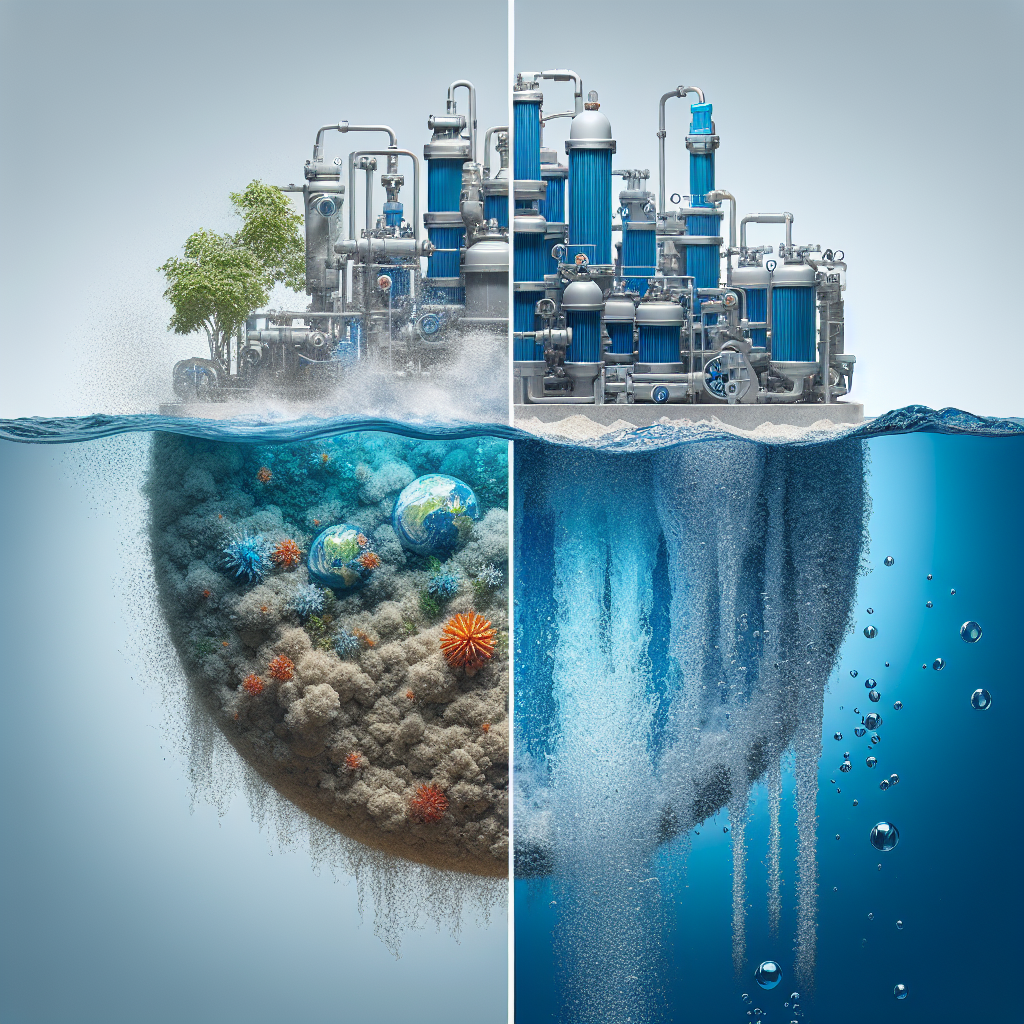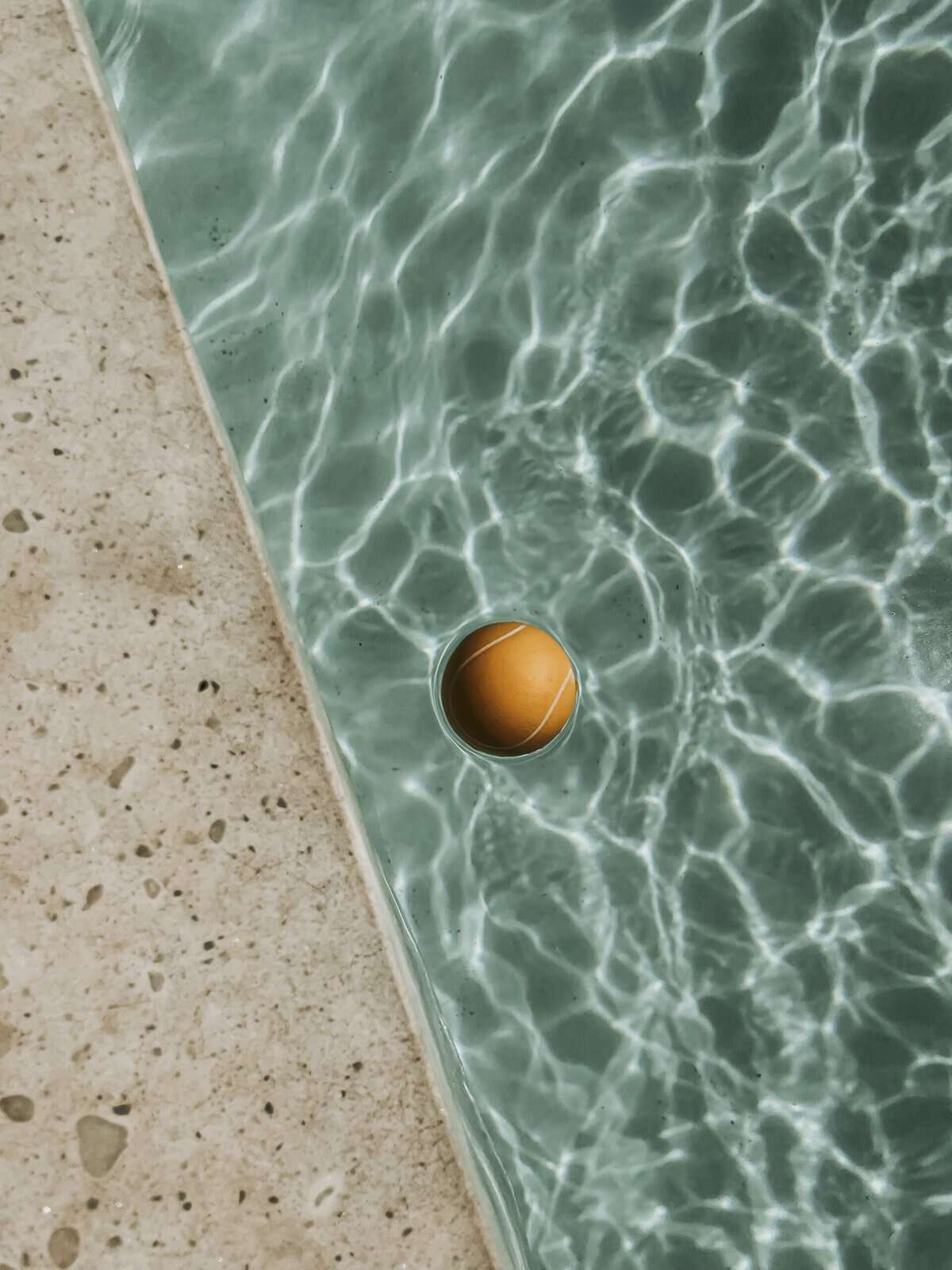If you’re concerned about the high levels of 1,4-dioxane in your well water, you may be wondering what treatment methods are available to address this issue. In this article, we’ll explore the different options and techniques that have proven to be effective in treating well water contaminated with 1,4-dioxane. So, whether you’re a homeowner or a well water supplier, this article aims to provide you with valuable insights on how to tackle this particular water quality concern in a friendly and informative manner.

1. Overview
Well water contaminated with 1,4-dioxane poses a significant health risk. This harmful chemical is considered a potential carcinogen and is also associated with liver and kidney damage. Therefore, it is crucial to implement effective treatment methods to remove or reduce the levels of 1,4-dioxane in well water. This article will explore various testing and removal techniques, as well as combined treatment approaches and considerations for selecting the appropriate treatment system.
2. Testing for 1,4-Dioxane
Before implementing any treatment methods, it is essential to accurately assess the concentration levels of 1,4-dioxane in the well water. This can be done through sampling and analysis.
2.1 Sampling and Analysis
Firstly, you need to collect water samples from the well and send them to a reputable laboratory for testing. It is advisable to follow appropriate sampling procedures to ensure accurate results. These may include using appropriate containers, avoiding cross-contamination, and taking samples at various times to account for any variability.
2.2 Laboratory Testing Methods
Laboratory testing for 1,4-dioxane typically involves techniques such as gas chromatography/mass spectrometry (GC/MS) or liquid chromatography/mass spectrometry (LC/MS). These methods can accurately quantify the levels of 1,4-dioxane in the water samples. Once you have the results, you can determine the most suitable treatment method based on the concentration levels.

3. Removal Techniques
Several treatment techniques can be utilized to remove or reduce the levels of 1,4-dioxane in well water. Each method has its advantages and limitations, and the choice depends on various factors such as the initial concentration of 1,4-dioxane, site-specific conditions, and cost considerations.
3.1 Activated Carbon Adsorption
Activated carbon adsorption is a widely used method for the removal of organic contaminants, including 1,4-dioxane. It involves passing the water through a bed of activated carbon, where the 1,4-dioxane molecules adsorb onto the carbon’s surface. This process effectively reduces the concentration of 1,4-dioxane in the water. However, the efficiency of activated carbon adsorption may decrease over time as the carbon becomes saturated.
3.2 Advanced Oxidation Processes
Advanced oxidation processes (AOPs) utilize powerful oxidants to break down organic contaminants like 1,4-dioxane into smaller and less harmful compounds. This method can be effective in removing 1,4-dioxane even at low concentrations. AOPs often involve the use of chemicals such as hydrogen peroxide, ozone, or ultraviolet (UV) light to initiate the oxidation process.
3.3 Nanofiltration and Reverse Osmosis
Nanofiltration and reverse osmosis are membrane-based processes that can effectively remove 1,4-dioxane from well water. These methods utilize semi-permeable membranes to separate contaminants from the water molecules. Nanofiltration is suitable for removing larger organic molecules, while reverse osmosis can eliminate even smaller ions and molecules. However, both processes require careful monitoring and maintenance to prevent fouling and ensure optimal performance.
3.4 Air Stripping
Air stripping involves exposing the contaminated water to a large air-water interface surface to transfer volatile contaminants, such as 1,4-dioxane, from the water phase to the air phase. This method relies on the difference in the vapor pressure between the compound and water. Air stripping can be an effective treatment technique for 1,4-dioxane removal, particularly at higher concentrations. However, it requires proper ventilation to prevent the released contaminants from recirculating into the surrounding environment.
3.5 Biological Treatment
Biological treatment methods utilize microorganisms to break down organic contaminants like 1,4-dioxane into less harmful substances. This approach can be cost-effective and environmentally friendly. Bioreactors or biofilters can be utilized to provide an ideal environment for the microorganisms to thrive and degrade the contaminants. However, the efficiency of biological treatment may be influenced by factors such as temperature, pH, and the availability of nutrients.
3.6 Chemical Precipitation and Coagulation
Chemical precipitation and coagulation involve the addition of chemical agents that react with 1,4-dioxane to form insoluble precipitates. These precipitates can then be removed through physical separation processes such as sedimentation or filtration. Chemical precipitation is effective in reducing 1,4-dioxane concentrations, but the selection of the appropriate chemical agent and dosage requires careful consideration based on the water chemistry.
3.7 Ion Exchange
Ion exchange is a process that involves exchanging ions between a solid resin and the water, resulting in the removal of specific contaminants. In the case of 1,4-dioxane removal, anion exchange resins are typically used due to the compound’s molecular structure. The resin traps the 1,4-dioxane ions, effectively reducing its concentration in the water. However, the capacity of ion exchange resins may decrease over time and require regeneration or replacement.
3.8 Ultraviolet (UV) Treatment
Ultraviolet (UV) treatment utilizes UV light to destroy the molecular structure of 1,4-dioxane and other contaminants. The exposure to UV light causes photolysis, breaking down the chemical bonds and rendering the compound less harmful. UV treatment is commonly used as a complementary method to other treatment techniques, and it is often included as part of a combined treatment approach.
3.9 Electrochemical Treatment
Electrochemical treatment involves the use of an electric current to degrade organic contaminants in the water. This method can effectively remove 1,4-dioxane through various electrochemical processes such as electrolysis or electrooxidation. Electrochemical treatment can be advantageous as it does not require the addition of chemicals, but it may have higher energy requirements compared to other treatment methods.
3.10 Hybrid Treatment Systems
Hybrid treatment systems combine two or more treatment methods to optimize the removal of 1,4-dioxane from well water. These systems can enhance the overall treatment efficiency and address the limitations of individual processes. Some examples of hybrid treatment approaches include combining activated carbon adsorption with AOPs, nanofiltration/reverse osmosis, chemical precipitation/coagulation, or ion exchange.
4. Combined Treatment Approaches
In some cases, a single treatment method may not be sufficient to fully remove 1,4-dioxane from well water. Combining different treatment techniques can provide a more comprehensive and effective approach.
4.1 Activated Carbon Filtration followed by Advanced Oxidation Processes (AOPs)
Using activated carbon filtration as the primary treatment method can remove a significant portion of 1,4-dioxane from the water. The effluent from the activated carbon filter can then be subjected to AOPs to further degrade any remaining traces of the contaminant.
4.2 Activated Carbon Adsorption followed by Nanofiltration/Reverse Osmosis
Combining activated carbon adsorption with nanofiltration or reverse osmosis can provide a multi-step treatment process. The activated carbon adsorption removes a significant portion of 1,4-dioxane, and the subsequent membrane filtration process further reduces its concentration.
4.3 Activated Carbon Adsorption followed by Chemical Precipitation/Coagulation
After 1,4-dioxane removal through activated carbon adsorption, a chemical agent can be added to facilitate the formation of precipitates. These precipitates can then be separated through processes such as sedimentation or filtration.
4.4 Activated Carbon Adsorption followed by Ion Exchange
Using activated carbon adsorption followed by ion exchange can provide a multi-stage treatment approach. The activated carbon will remove the majority of 1,4-dioxane, and the subsequent ion exchange process can further reduce the remaining concentration.
4.5 Air Stripping followed by Advanced Oxidation Processes (AOPs)
Air stripping can be combined with AOPs as a sequential treatment method. The air stripping process removes volatile contaminants such as 1,4-dioxane, and the effluent can then undergo AOPs for further degradation.
4.6 Biological Treatment followed by Nanofiltration/Reverse Osmosis
Starting with biological treatment can help break down organic contaminants, including 1,4-dioxane, into smaller, less harmful substances. The partially treated water can then be subjected to nanofiltration or reverse osmosis for further removal of remaining contaminants.
4.7 Biological Treatment followed by Chemical Precipitation/Coagulation
Biological treatment followed by chemical precipitation/coagulation can be an effective combination for 1,4-dioxane removal. The biological treatment breaks down the contaminant, and the subsequent chemical process aids in the formation of precipitates.
4.8 Biological Treatment followed by Ion Exchange
Combining biological treatment with ion exchange can provide a multi-stage approach for 1,4-dioxane removal. The biological treatment reduces the initial concentration, and the subsequent ion exchange process further decreases the remaining levels.

5. Considerations for Treatment System Selection
When selecting the most appropriate treatment system for well water with high levels of 1,4-dioxane, several factors should be taken into consideration.
5.1 1,4-Dioxane Concentration Levels
The initial concentration of 1,4-dioxane in the well water is an important factor in determining the suitable treatment method. Higher concentrations may require more advanced treatment techniques or a combination of methods to achieve the desired results.
5.2 Site-Specific Factors
Site-specific factors such as the availability of space, water flow rates, and water quality parameters can influence the selection and design of the treatment system. Considerations should also be given to any potential impacts on the surrounding environment.
5.3 Costs and Operation/Maintenance Requirements
The costs associated with implementing and operating the treatment system should be carefully considered. This includes initial capital costs, ongoing operational costs, and maintenance requirements. It is advisable to evaluate the long-term cost-effectiveness of the chosen treatment approach.
6. Case Studies
Examining real-life case studies can provide valuable insights into the effectiveness of different treatment methods for well water contaminated with 1,4-dioxane. The following case studies highlight various treatment approaches.
6.1 Case Study 1: Activated Carbon Adsorption
In this case study, a well water source with high levels of 1,4-dioxane was treated using activated carbon adsorption. The results showed a significant reduction in the concentration of 1,4-dioxane, with the treated water meeting the required regulatory standards.
6.2 Case Study 2: Advanced Oxidation Processes (AOPs)
A well water source contaminated with 1,4-dioxane underwent treatment using advanced oxidation processes. The AOPs effectively degraded the 1,4-dioxane, resulting in a considerable reduction in concentration levels and ensuring the water’s safety for consumption.
6.3 Case Study 3: Nanofiltration and Reverse Osmosis
This case study focused on treating well water with high levels of 1,4-dioxane using a combination of nanofiltration and reverse osmosis. The membrane-based processes effectively removed the majority of the contaminant, resulting in water that met the desired quality standards.
6.4 Case Study 4: Air Stripping
In this case study, air stripping was employed to remove 1,4-dioxane from well water. The results demonstrated the efficacy of air stripping, with a significant reduction in 1,4-dioxane concentration achieved, making the water safe for consumption.
6.5 Case Study 5: Biological Treatment
A well water source with high levels of 1,4-dioxane underwent biological treatment. The microorganisms present effectively broke down the contaminant, resulting in a significant reduction in 1,4-dioxane concentration and ensuring the water’s safety.
6.6 Case Study 6: Chemical Precipitation and Coagulation
Chemical precipitation and coagulation were employed to treat well water contaminated with 1,4-dioxane. The addition of suitable chemicals facilitated the removal of the contaminant, resulting in treated water that met the required quality standards.
6.7 Case Study 7: Ion Exchange
This case study focused on the application of ion exchange for the removal of 1,4-dioxane from well water. The ion exchange resin effectively trapped the 1,4-dioxane ions, resulting in a considerable reduction in the contaminant concentration and ensuring the water’s safety for consumption.
6.8 Case Study 8: Ultraviolet (UV) Treatment
A well water source with high levels of 1,4-dioxane underwent treatment using ultraviolet (UV) light. The exposure to UV light effectively degraded the 1,4-dioxane, resulting in a significant reduction in the concentration levels and ensuring the water’s safety.
6.9 Case Study 9: Electrochemical Treatment
In this case study, an electrochemical treatment method was employed to remove 1,4-dioxane from well water. The application of an electric current effectively degraded the contaminant, resulting in a considerable reduction in concentration levels and ensuring the water’s safety.
6.10 Case Study 10: Hybrid Treatment Systems
This case study explored the implementation of a hybrid treatment system combining multiple treatment techniques for 1,4-dioxane removal. The results demonstrated the enhanced performance of the combination, resulting in significant reduction in concentration levels and ensuring the water’s safety.

7. Conclusion
Well water contaminated with high levels of 1,4-dioxane poses serious health risks. Implementing effective treatment methods is crucial to ensure the safety and quality of the water. Various techniques such as activated carbon adsorption, advanced oxidation processes, nanofiltration, reverse osmosis, air stripping, biological treatment, chemical precipitation, coagulation, ion exchange, ultraviolet treatment, electrochemical treatment, and hybrid treatment systems can be employed to remove or reduce 1,4-dioxane concentrations. The choice of treatment method should consider factors such as initial concentration levels, site-specific conditions, and cost considerations. Additionally, combining multiple treatment approaches through hybrid systems can optimize the removal efficiency. Real-life case studies provide valuable insights into the effectiveness of different treatment methods. By selecting the appropriate treatment system based on systematic evaluations, well water can be effectively treated to ensure the removal of 1,4-dioxane and protect human health.

